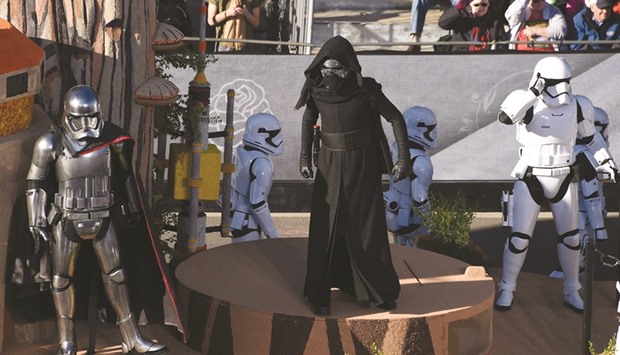The young Steven Spielberg stood nervously chewing his fingernails at a 1975 preview of his horror movie Jaws, with no inkling of the success yet to come.
He saw a member of the audience leave the cinema shortly after the film began, and worried he might have gone overboard with the blood, as the man ran to the toilet, vomited - and went straight back into the screening.
It was the birth of the blockbuster.
Today, blockbusters are the lifeblood of Hollywood’s dream factory. Far from investing resources evenly among film projects, major studios like Sony and Warner Brothers pump hundreds of millions of dollars into just a few, developing and marketing franchises in grand style, while the rest of the films make do with the leftovers.
It’s strategic - and the surest way for lasting success in show business, writes Harvard Business School professor Anita Elberse, author of the book Blockbusters: Hit-making, Risk-taking and the Big Business of Entertainment.
In 2010, the Warner Brothers studio released 22 films with combined production costs of $1.5bn. One third of it was funnelled into just three films: Harry Potter and the Deathly Hallows Part 1 ($250mn ), Inception ($175mn ), and Clash of the Titans ($125mn).
Every year, the Warner Brothers showered cash on four or five films that executives believed could crack the $1bn earnings mark, Elberse writes, citing a former Warner Brothers president who pioneered the strategy.
Hype and expectations built into “a self-fulfilling prophecy”, she wrote.
Given its decades-long cult status and the months of hype that preceded it, it seemed a foregone conclusion that Star Wars: The Force Awakens would topple Avatar from its pedestal atop the domestic list of all-time top-grossing films.
Hollywood’s latest blockbuster has earned more than $1.5bn worldwide since opening in mid-December, and helped propel overall worldwide box office earnings to record highs in 2015.
But as with so many sequels, reboots, remakes and spin-offs, Disney’s pursuit of galactic-sized profits for the latest sequel may have undermined the creativity that drew fans to Star Wars in the first place.
George Lucas himself, who created the science fiction franchise and sold it to Disney in 2012, criticised the new film as “retro” and publicly rued letting Disney’s “white slavers” get their hands on it.
He thought the new film could have used new planets, new spaceships - in short, a truly new story. Instead, Disney prioritised profit, feeding tried-and-true cult characters C-3PO, Han Solo and Chewbacca into the film’s unstoppable franchise machine to brand products from fruit to mascara, razors and lipstick.
Star Wars: The Force Awakens is now the biggest-selling film in US history in absolute terms. Adjusted to today’s dollars, the original Star Wars, released in 1977, is the second-biggest domestic film of all time. The franchise is a cash cow, even ahead of the new film’s opening today in China.
Despite the big investments - or perhaps because of them - blockbusters are turning off many cinephiles and directors.
“Star Wars swept all the chips off the table,” said William Friedkin, Oscar-winning director of The Exorcist and The French Connection.
“What happened with Star Wars was like when McDonald’s got a foothold, the taste for good food just disappeared,” he said. ‘”Everything has gone backward toward a big sucking hole.”
“Star Wars was in. Spielberg was in,” said director Martin Scorsese, explaining how noisy, big-budget blockbusters came to replace smaller-earning films in Hollywood’s hierarchy. “We were done.”
The success of one film is always to the detriment of another - as shown even by the origin of the word ‘blockbuster.” In times of war, blockbusters were multi-ton bombs that could deliver destruction from the air.
Now that ringing cash registers have replaced ringing endorsements as the measure of cinematic success, the term has taken on a positive cast.
Yet cash in doesn’t always equal cash out. The mightiest of films may fall, as shown by the 2012 film John Carter.
Disney pumped more than $350mn into making and marketing the fantasy extravaganza, in which a soldier from the US Civil War (1861-65) somehow ends up on the planet Mars. What could go wrong?
And yet, despite a script based on a story by celebrated Tarzan writer Edgar Rice Burroughs and direction by Toy Story wunderkind Andrew Stanton, the film failed to live up to the hype.
Disney took a $200mn write-down for the film, which has gone down in history not as a blockbuster, but as a cautionary tale.

Star Wars characters were part of Disneyland Resort’s Diamond Celebration float celebrating the park’s 60th anniversary, in the 127th Rose Parade in Pasadena, California, recently. Star Wars: The Force Awakens is now the biggest-selling film in US history in absolute terms.
